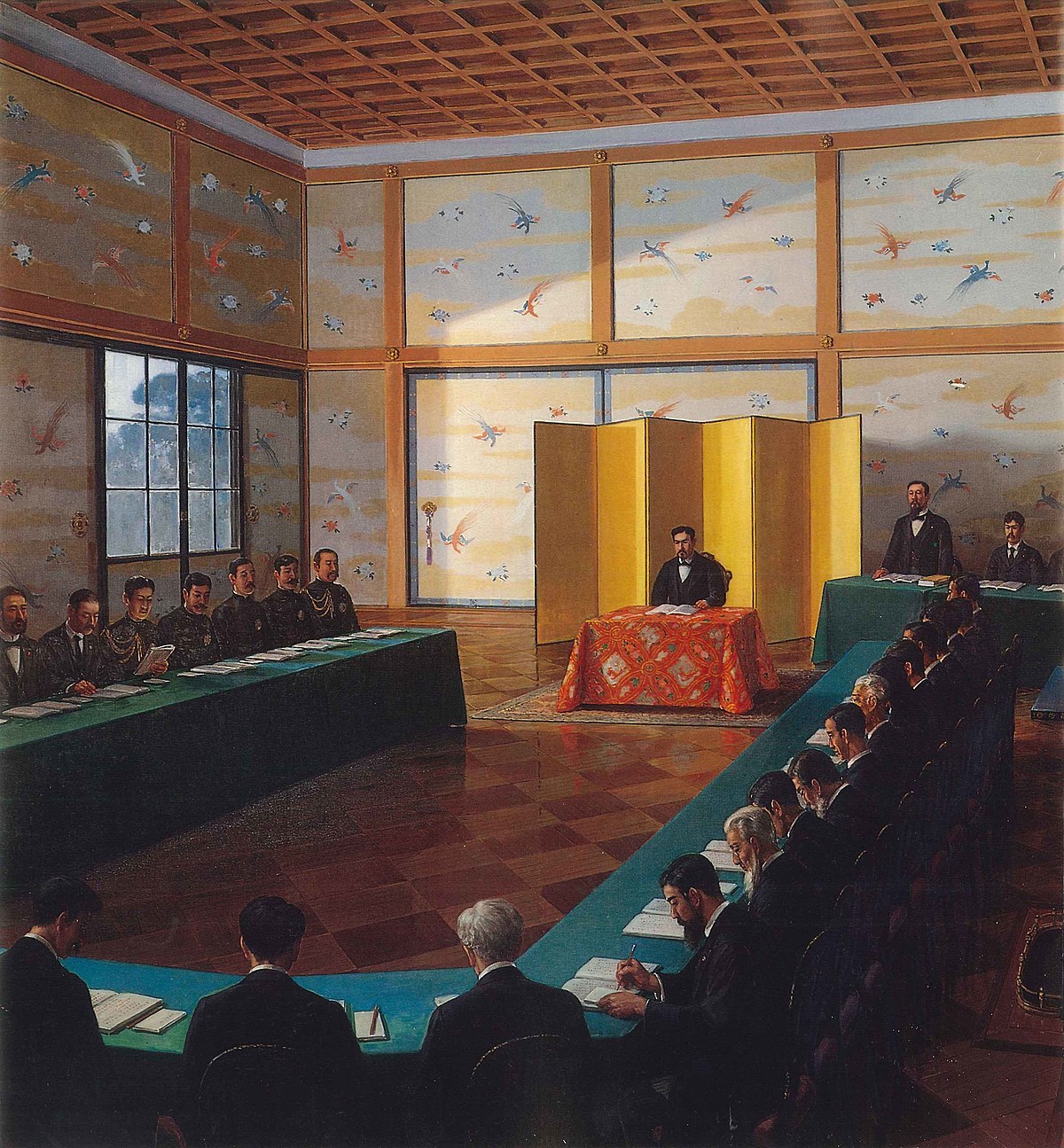
Meiji Constitution
JapanThe Constitution of the Empire of Japan was the constitution of the Empire of Japan which was proclaimed on February 11, 1889, and remained in force between November 29, 1890 and May 2, 1947. Enacted after the Meiji Restoration in 1868, it provided for a form of mixed constitutional and absolute monarchy, based jointly on the German and British models. In theory, the Emperor of Japan was the supreme leader, and the Cabinet, whose Prime Minister would be elected by a Privy Council, were his followers; in practice, the Emperor was head of state but the Prime Minister was the actual head of government. Under the Meiji Constitution, the Prime Minister and his Cabinet were not necessarily chosen from the elected members of parliament.
During the American Occupation of Japan the Meiji Constitution was replaced with the "Postwar Constitution" on November 3, 1946; the latter document has been in force since May 3, 1947. In order to maintain legal continuity, the Postwar Constitution was enacted as an amendment to the Meiji Constitution.
